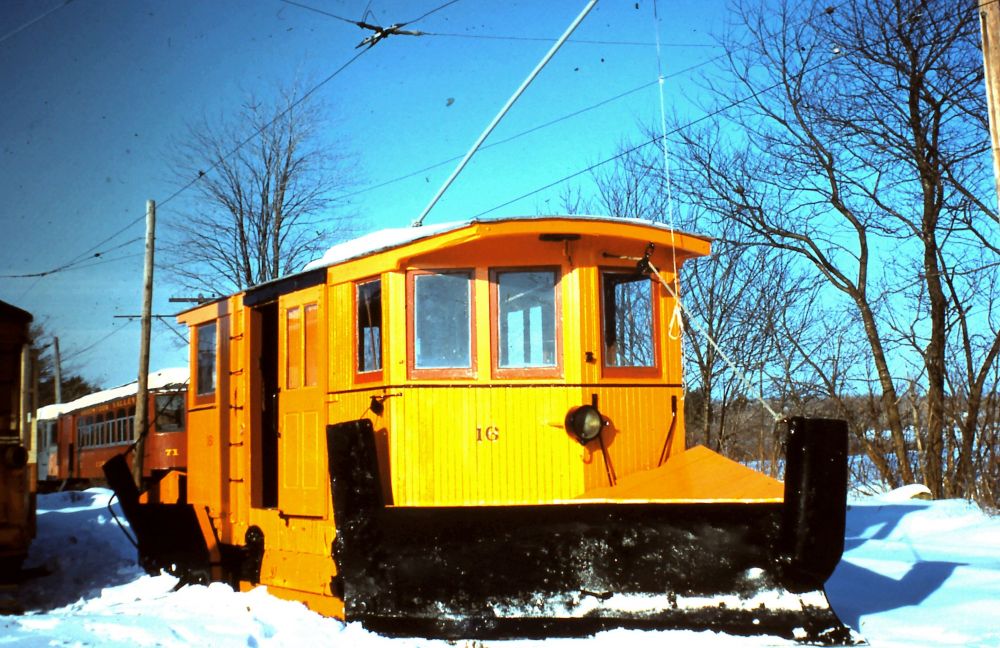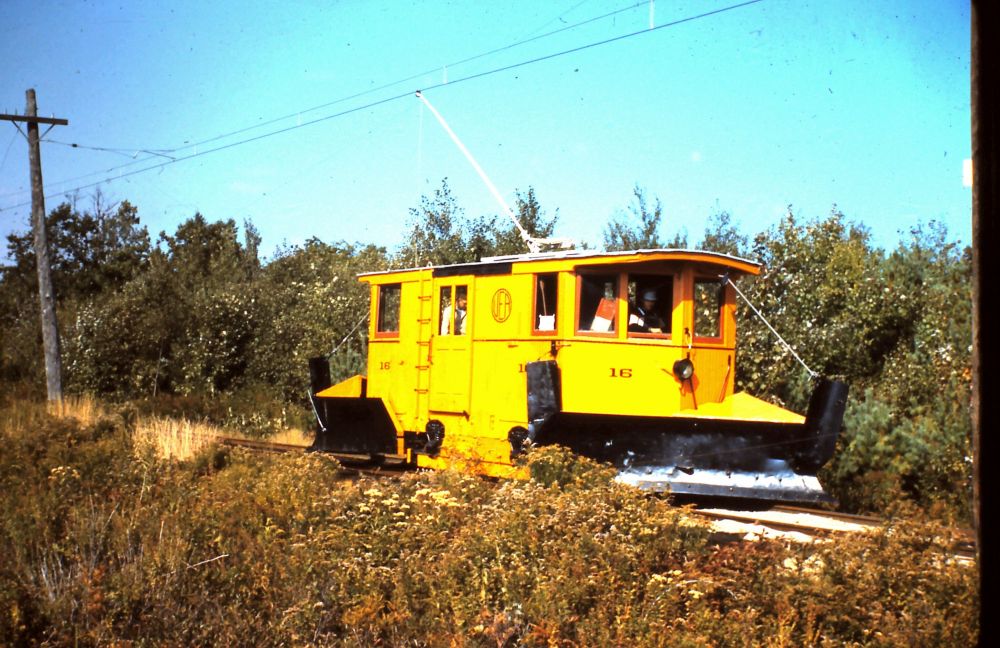
Russell Monroe in February 1960
- Builder
- Wason Manufacturing Co.
- Description
- Shear snow plow
- Secondary Use
- None
- Type
- Snow Removal Cars
- Year
- 1905
- Retired from Service
- 1948
- Acquired by the Museum
- 1948
- Note
- Number 16 was last operated in the 60’s when it actually plowed snow.
United Electric Railways 16
From Providence, Rhode Island
History
Number 16 was built by the Wason Manufacturing Company of Springfield, MA, in 1905 for the Rhode Island Company. . It is an example of a double ended, single truck shear snow plow to be used on double track to plow the snow to the right. Unfortunately, it proved itself better at shoving itself off the tracks than shoving the snow. The Rhode Island Company was created to lease the operation of the United Traction and Electric Company, which included streetcar lines in Providence as well as the suburban lines running through Cumberland, Pawtucket Valley, Barrington, and Warren. In 1907, the New York, New Haven and Hartford Railroad gained control of RICo. But antitrust laws soon forced the railroad out of the state, leaving the Rhode Island Company without the financial support of the larger company. It now had to face crushing debts and increasing competition from automobiles and jitneys on its own, which proved too much. In 1918, the Rhode Island Supreme Court cancelled its leases and RICo went into bankruptcy. In 1919 the United Electric Railways was chartered and assumed control of Rhode Island Company. UER was put under the control of the Rhode Island Public Utilities Commission to protect service from any disruption from financial difficulties. During the Great Depression, UER suffered from deferred maintenance and service reductions, and buses began to replace the trolleys. By 1948, the trolleys were completely replaced by trolleybuses. The Seashore Trolley Museum acquired Number 16 on June 7th, 1948. It was stored at the Edaville Railroad in South Carver, MA, along with Union Street Railway Mail Car No. 34. While there, volunteer members painted the entire outside including the roof and repaired the trolley base. The plow blades were ground down and sprayed with rust resistant paint. In the years prior to 1976, the sides and roof have been painted several times and 100 linear feet of new matchboard has been milled to replace deteriorated pieces. Operation confirmed that the shear plow frequently pushed the car off the tracks. Because the motors hang low under the car, they are susceptible to contamination from dirt, salt and moisture, and only one of the two motors was working.
Technical Information
- Control: K-35LL
- Brakes: Hand
- Compressor: None
Trucks
- Number: 1
- Manufacturer: Wason
Motor
- Number: 2
- Manufacturer: General Electric
- Model: 80
Weight and Dimensions
- Length: 25’ 6.00"
- Width: 8’ 10.00"
- Height: 10’ 9.00"
Additional Images

Russell Monroe in 1961
© 1998 - 2025 New England Electric Railway Historical Society. All Rights Reserved.